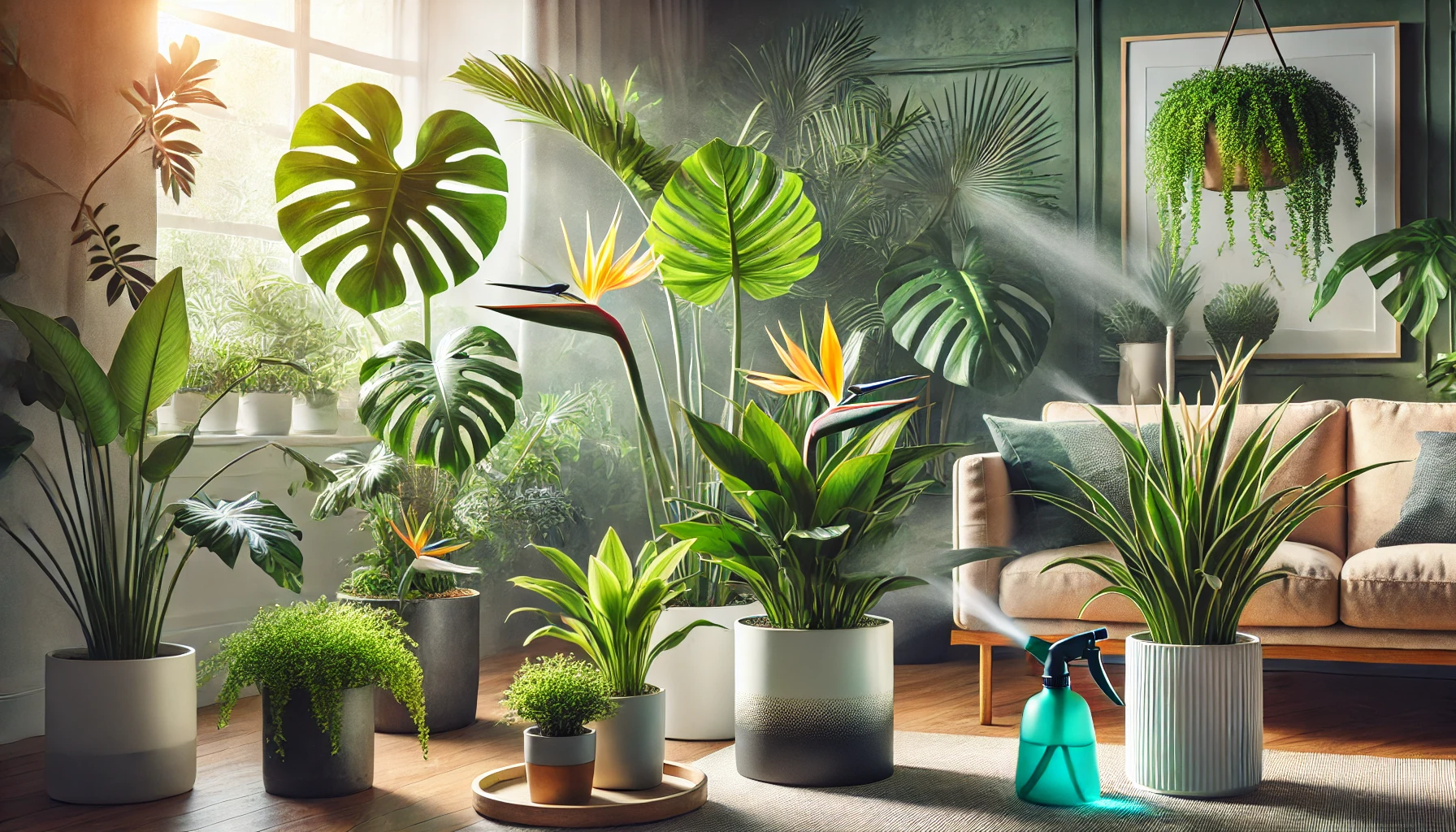Tropical houseplants are known for their lush foliage, vibrant colors, and exotic beauty, making them a popular choice for indoor greenery. However, their unique needs require specific care to ensure they thrive in an indoor environment. This guide will teach you how to provide the right conditions for your tropical plants to flourish.
Why Choose Tropical Houseplants?
Tropical plants bring a touch of the rainforest to your home, creating a vibrant and relaxing atmosphere. Many tropical varieties also improve air quality and add visual interest with their striking leaves and blooms.
Popular Tropical Houseplants
- Monstera deliciosa (Swiss Cheese Plant): Iconic split leaves add a bold statement to any room.
- Bird of Paradise: Large, dramatic leaves and occasional orange blooms mimic its namesake bird.
- Calathea: Known for its intricate leaf patterns and vibrant colors.
- Fiddle Leaf Fig: A trendy plant with large, glossy leaves.
- Peace Lily: Elegant white flowers and air-purifying qualities.
- Philodendron: Easy-to-care-for plants with a variety of shapes and sizes.
- Anthurium: Striking red or pink flowers that last for weeks.
Ideal Growing Conditions for Tropical Plants
1. Light
- Bright, Indirect Light: Most tropical plants thrive in bright, filtered sunlight similar to the dappled light of their natural rainforest habitats.
- Avoid Direct Sunlight: Harsh sunlight can scorch leaves. Use sheer curtains or place plants away from windows to diffuse light.
- Adapt to Low Light: Some varieties, like peace lilies and philodendrons, can tolerate low-light conditions.
2. Temperature
- Maintain a consistent temperature between 65°F and 80°F (18°C to 27°C).
- Avoid placing plants near cold drafts, heaters, or air conditioning vents, as sudden temperature changes can stress them.
3. Humidity
- Tropical plants love high humidity levels of 50% or more.
- Increase humidity by misting plants, using a pebble tray filled with water, or placing a humidifier nearby.
4. Soil
- Use well-draining potting soil rich in organic matter.
- For specific plants like anthuriums, consider a mix that includes orchid bark or coco coir to improve aeration.
5. Watering
- Water when the top inch of soil feels dry. Tropical plants prefer consistently moist but not soggy soil.
- Use room-temperature water to avoid shocking the roots.
Caring for Tropical Houseplants
1. Fertilizing
- Feed plants during the growing season (spring and summer) with a balanced liquid fertilizer diluted to half strength.
- Reduce or stop feeding during fall and winter when growth slows.
2. Pruning and Cleaning
- Remove yellowing or dead leaves regularly to promote healthy growth.
- Wipe leaves with a damp cloth to remove dust, allowing plants to absorb more light and breathe better.
3. Repotting
- Repot tropical plants every 1-2 years to refresh the soil and give roots more space.
- Choose a pot slightly larger than the current one, with drainage holes to prevent waterlogging.
4. Pest Control
- Inspect plants regularly for pests like spider mites, aphids, or mealybugs.
- Use natural remedies like neem oil or insecticidal soap to treat infestations.
Troubleshooting Common Issues
- Yellow Leaves: Often caused by overwatering or poor drainage. Allow the soil to dry out before watering again.
- Brown Leaf Edges: Indicate low humidity or inconsistent watering. Increase humidity and maintain a regular watering schedule.
- Leggy Growth: Caused by insufficient light. Move the plant to a brighter location.
- Drooping Leaves: Can be a sign of underwatering, overwatering, or temperature stress. Check soil moisture and adjust care accordingly.
Decorating with Tropical Plants
- Living Room: Use large plants like monstera or bird of paradise to fill empty corners and create a focal point.
- Bathroom: High humidity makes it ideal for ferns and calatheas.
- Bedroom: Place air-purifying plants like peace lilies for better sleep quality.
- Office: Compact plants like philodendrons or anthuriums add greenery without taking up too much space.
Benefits of Tropical Plants
- Improved Air Quality: Many tropical plants filter toxins and release oxygen.
- Stress Relief: Their lush greenery creates a calming environment.
- Aesthetic Appeal: Tropical plants add a touch of elegance and vibrancy to any space.
Tropical houseplants can transform your home into a lush, serene oasis with proper care. By providing the right light, humidity, and watering routine, you’ll enjoy thriving, healthy plants that elevate your indoor space.
